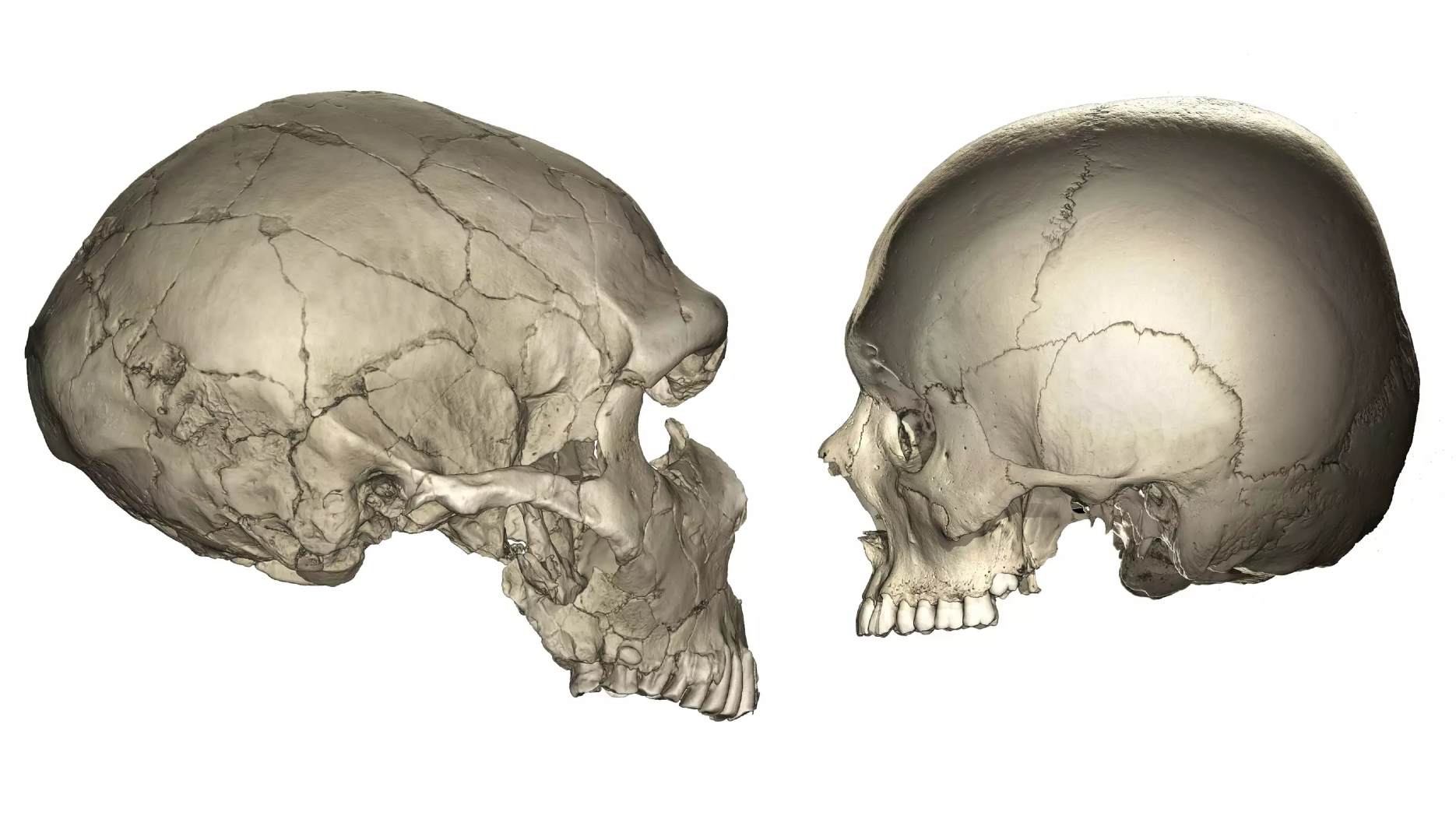Now Reading: Why Modern Humans Evolved Smaller Faces Compared to Neanderthals and Chimps
-
01
Why Modern Humans Evolved Smaller Faces Compared to Neanderthals and Chimps
Why Modern Humans Evolved Smaller Faces Compared to Neanderthals and Chimps

Rapid Summary
- Research published in teh Journal of Human Evolution explores why modern humans have smaller and flatter faces compared to Neanderthals and chimpanzees.
- The study involved analysis of 174 skulls representing Homo sapiens,Neanderthals,and chimpanzees to investigate facial bone growth patterns.
- Researchers digitized over 200 landmarks on the midface area using virtual 3D models and performed microscopic analysis for bone formation and resorption.
- Key findings show that Neanderthal faces continued growing through early adulthood due to predominant bone formation, whereas modern human faces stop growing during adolescence with higher bone resorption levels.
- Earlier cessation of facial growth was identified as a unique trait in Homo sapiens, suggesting distinct evolutionary developmental patterns.
- Hypotheses for larger Neanderthal faces include adaptation to cold climates, energy needs, chewing tough foods, or using teeth as tools. Smaller human faces may relate to cooking invention or increased brain size.
Indian Opinion Analysis
This research sheds light on an evolutionary distinction between species that resonates beyond paleoanthropology-for instance, emphasizing how functional adaptations might influence physical traits. For India-home to notable archaeological efforts-the study highlights the importance of advanced methodologies like 3D modeling in understanding developmental processes across species. Insights from such comparative studies contribute not only toward tracing human evolution but also toward broader implications like biomedical research or developmental biology.
India’s ancient relics often reveal glimpses into early Homo sapiens’ lifestyles. Strengthening local research capabilities around cranial anatomy could enrich ancient narratives about early migrations through regions like South Asia’s Indus Valley while boosting contributions from Indian scholars in global evolutionary science discourse.


























